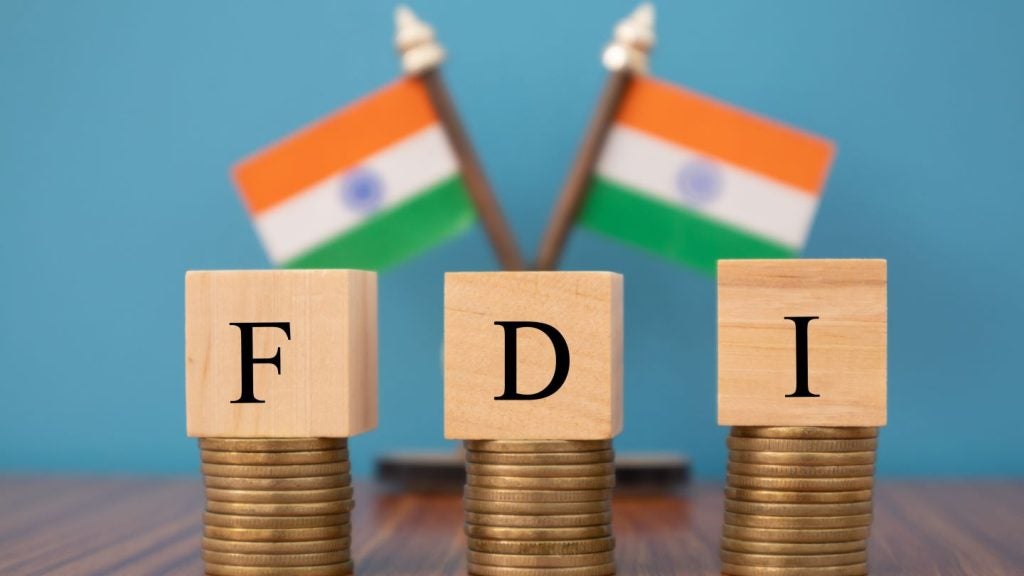Views that are not backed by fact often have a
nasty habit of becoming common wisdom. This is particularly true in
the European life and pensions industry believes Ernst & Young
(E&Y).
In a study, Voice of the customer Time for
insurers to rethink their relationships, theservices firm
highlights what itterms “myths” pervading the European
life,pensions and investments industry:

Access deeper industry intelligence
Experience unmatched clarity with a single platform that combines unique data, AI, and human expertise.
- customers have low confidence in the life and
pensions industry - life insurance is sold, not bought;
- personal interaction is essential;
- it is hard to cross-sell to existing
customers; - and providers can’t influence
persistency.
E&Y’s conclusion that these five common
wisdoms, while containing elements of truth, are not entirely
accurate is drawn from a survey of consumers in eight very
different European markets: France, Germany, Italy, the
Netherlands, the UK, Spain, Turkey and Poland. Despite the
diversity of
these markets, E&Y’s findings reflect a
significant degree of consistency across all eight countries.
Satisfied customers
Far from being wary of the insurance industry
and the products it sells, E&Y found that European consumers
hold a surprisingly positive view of it.

US Tariffs are shifting - will you react or anticipate?
Don’t let policy changes catch you off guard. Stay proactive with real-time data and expert analysis.
By GlobalDataAcross the countries covered by E&Y, an
average of 79% of respondents stated that they feel confident that
the product they bought meets their needs.
Only 16% stated that they were not very, or
not at all, confident. Where there was a lack of confidence,
E&Y found that the main reasons are lack of information and
understanding. E&Y found that consumers are also generally
satisfied with the service insurers provide.
The overall mean customer satisfaction rating
for the industry was seven out of a possible maximum of 10, with
relatively consistent ratings across the region, ranging from a low
of 6.6 in Italy to a high of 7.3 in the UK.
However, despite this relatively high level of
satisfaction, insurers cannot afford to rest on their laurels.
Compared to other industries, 18% of consumers polled by E&Y
believe the insurance industry can do a whole lot better when it
comes to providing service.
A far higher 42% of consumers feel that when
it comes to rewarding loyalty, insurers are falling short.
There is also a great deal of room for
improvement in insurers’ online offerings which fall well short of
those of many other industries. E&Y points out that consumers
are increasingly demanding the ability to access service providers
online when and where they want.
There is also a growing demand amongst
consumers to personalise online services and access information to
support purchase decisions.
Consumers take the lead
That life insurance is sold and not bought
still generally holds true in Europe. But things are changing in
ways that, amongst other things, again highlights the need for
insurers to have a sophisticated online presence.
In its survey E&Y found that consumers are
increasingly seeking out information themselves, rather than simply
relying on being “sold to”.
Pointing to this, E&Y found that while for
previous purchases, only 27% of respondents had conducted a fair or
great deal of research, for future purchases, 65% expect to follow
the research route.
Consumers, stressed E&Y, have a clear
understanding of the financial needs and they want products to meet
them. In their research consumers are looking for factual
information to confirm they are selecting the right product.
The top three factors customers identified
were: financial stability (48%), product features (48%) and product
track record (37%).
Notably, comparative websites are viewed by
the highest proportion of consumers (48%) as the leading source of
information they will use when buying another product.
E&Y also found that factors such as
advisor recommendation and brand are less important, indicating
that consumers are less influenced by providers’ own claims or the
recommendation of an intermediary, which could be biased.
Specifically, only 35% of consumers would seek
advice from an intermediary when buying another product while an
even fewer 11% would be influenced by advertising and
mail-shots.
Following on from this is the belief that
personal interaction between insurer and consumers is essential to
educate consumers about their financial needs and explain which
products to buy.
E&Y concedes that this view cannot be
termed a myth in the strictest sense in that it is largely true
that many customers still need personal interaction with an
insurer.
The reason, explains E&Y, is that most
customers still lack confidence to buy without assistance. The two
most common reasons cited for the use of advisors in Europe are
that products are too technical and complicated and that customers
feel they need expert advice when making important financial
decisions.

But the proportion of consumers that feel they
need advice appears to be far lower than is generally believed.
Specifically, E&Y found that 51% of consumers feel they need
professional assistance to make important decisions. The assistance
needed may, however, be limited. For example, 24% of consumers feel
that they need assistance with the paperwork.
On average a significant 14% of consumers feel
they need no personal interaction at all with their insurer. But
this varies considerably, from highs of 20% in the UK, 19% in the
Netherlands and 17% in Germany to lows of 10% in Spain, 9% in
France and 8% in Turkey.
E&Y noted that consumers falling into this
category want complete control over the buying process and do not
want to be subjected to sales pressure.
Although in a minority, insurers cannot afford
to ignore the significance of the do-it-yourself buyers
particularly as they tend to be more prevalent amongst higher
income groups. These consumers, notes
E&Y, are looking for good value products
that they can buy directly, preferably over the internet.
E&Y adds that new, mainly online, products
are emerging to target this segment – particularly in the wealth
management space and for buying simple life-protection
products.
The approaches being used are similar to
non-life insurance comparison sites. “This sales route may take an
increasing share of the market, so insurers need to respond to this
trend if they want to maintain market share,” advises E&Y.
Cross selling potential
For any financial institution the objective is
to sell a customer as many products as possible.
The benefits include avoiding the high cost of
acquiring new customers. However, the reality is that the success
rate of cross selling efforts is low.
In the case of European life insurers, E&Y
found in its study that on average only 19% of those surveyed have
bought more than one product from the same provider. This, notes
E&Y, varies from a high of 25% in Italy, where strong
bancassurance relationships probably drive higher cross-sales, to a
low of 11% in the UK, which is dominated by independent advisors
who select from a wide range of providers.
Across Europe, E&Y found that trust in the
provider and convenience are the main factors driving repeat
purchases. Also important are incentives for repeat purchase.
Specifically, price discounts were cited by 20% of respondents as
the top reason for buying additional products.
E&Y points to a French bancassurer that on
its website has a “shopping cart” facility like those of online
retailers which rewards customers with discounts and upgrades for
making multiple purchases.
Targeted marketing is another effective way of
boosting cross selling success, notes E&Y. These strategies
employ customer segmentation models, which identify customers who
have the highest propensity to purchase due to, for example, a
lifestyle change such as retirement.
Following on from a desire to increase cross
selling is the need many insurers have to improve consistency.
Value of persistency
According to E&Y, its studies of European
insurers indicate that a 10% improvement in persistency can deliver
an improvement in embedded value of between 2% and 4% and an
improvement in new business value of up to a 10%.
E&Y believes that the fault for lapses can
be laid at insurers’ doors. In its study E&Y found that
insurance providers across Europe only make fair or great efforts
to retain customers in 30% of cases on average.
This varies considerably across countries. In
Turkey, 60% of insurers put in a great or fair amount of effort to
prevent lapses. Turkish insurers are followed by those in Italy
(41%), Germany (39%) and Spain (32%).
At the bottom end of the scale are insurers in
the Netherlands (14%), the UK (20%) and France (21%). Laying
further blame at insurers’ doors, E&Y notes that its survey
revealed that the top two reasons respondents cited for switching
providers are an inability to meet changed needs (27% of
respondents) and poor service (24%).
Notably, when respondents were asked if the
level and quality of contact with their provider makes them more
loyal and less likely to switch, 47% of customers agreed and only
16% disagreed.
If a single conclusion can be drawn from
E&Y’s extensive study it is simply that many European life
insurers need to carefully reassess many common wisdoms that could
well be acting as a constraint on their growth and
profitability.







